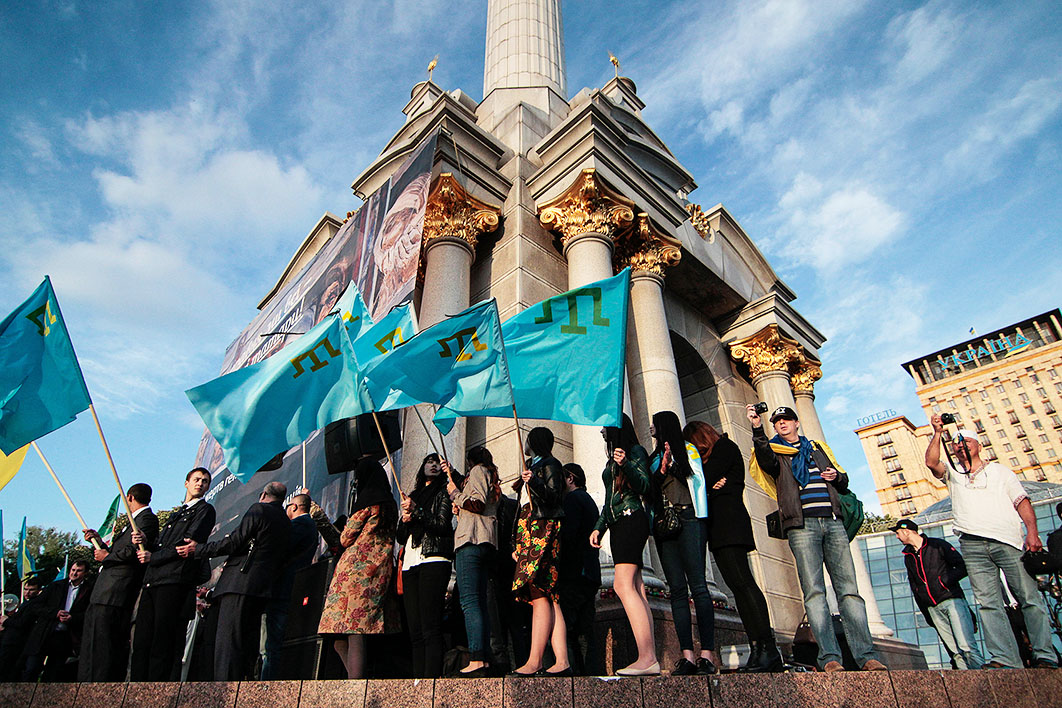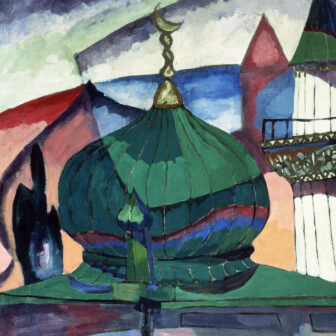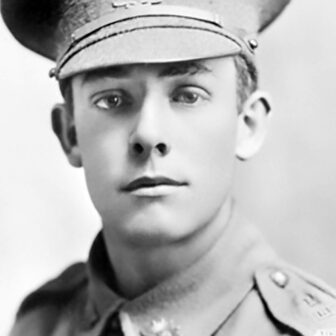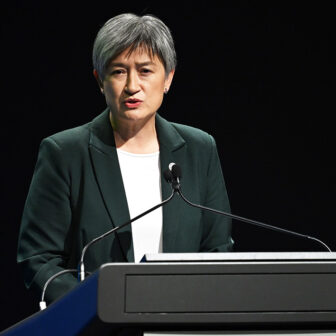Just after sunrise on 18 May 1944 eleven-year-old Shevkiye Dzhemileva watched in shock as troops burst into her house near the southern coast of Crimea, the peninsula that juts, like a pendant, halfway across the Black Sea from Ukraine. As she later told her granddaughter, journalist Elmaz Asan, the soldiers gave Shevkiye, her mother and her three siblings fifteen minutes to collect some belongings. They then marched them at gunpoint to a railway station and loaded them with other villagers onto crowded cattle trucks.
Similar scenes were repeated across the peninsula on that Kara Gun (black day), as units of the Soviet internal security forces surrounded Crimean Tatar towns and villages. From there, the captives were sent by rail 3000 kilometres to Central Asia, and mostly unloaded in eastern Uzbekistan. Soon, the entire Crimean Tatar population of nearly 200,000 people had been removed from their homeland.
Nearly 8000 Crimean Tatars died on the weeks-long train journey. The rest were forced to live in abysmal conditions in “special settlements” for the next decade. Tens of thousands — almost half of them, according to the Crimean Tatars — died of hunger, cold or disease during the first few years of exile.
To justify this collective punishment, Soviet dictator Joseph Stalin falsely accused the Crimean Tatars of mass collaboration with the Nazi occupation, which had just ended. It’s true that some Tatars did collaborate — as others had in many places during the war — but many more fought bravely in the Red Army and partisan units. Six received Hero of the Soviet Union medals, equivalent to a Victoria Cross.
Shevkiye’s father Dzhemil was one of the men still with the Red Army at the front, fighting the same Nazis his people were accused of aiding.
A more likely explanation for the Soviet move is that the paranoid Stalin wanted to clear his country’s borderlands of Turkic or Islamic peoples in advance of a possible war with Turkey (which never happened). The Crimean Tatars were one of many peoples from the country’s periphery considered suspect and transported en masse to Central Asia or Siberia: others included Chechens, Ingush, Kalmyks, Meskhetian Turks, Balkars and Karachai, as well as ethnic Koreans, Volga Germans and Finns.
The Crimean Tatars’ forced exile was but the latest chapter in a poorly known story that is as bleak and tragic as those experienced by many indigenous peoples following conquest and colonisation. It has rightly been described as genocide, not least by the Russian parliament in the heady, democratic days of 1991. The Tatars’ tale forms a crucial backdrop to understanding the current war in Ukraine, and its possible resolution.
That war really began when Russia invaded Crimea in February 2014. Troops in unmarked uniforms, dubbed “little green men,” fanned out from Russia’s Black Sea Naval Base in Sevastopol (leased from Ukraine) and seized key government buildings and installations. A few weeks later, after a sham referendum, Russia annexed the peninsula. It has been under occupation ever since.
Since Ukraine blunted Russia’s full-scale invasion in 2022, a big question hangs over whether Ukraine can mount a successful counteroffensive and go as far as retaking Crimea. And if it can’t, will it have to give up Crimea as part of a peace deal? The Tatars’ fate, as an indigenous people recognised by Ukraine and internationally, must be considered in such calculations.
Vladimir Putin portrayed the annexation of Crimea in 2014 as the long-awaited and rightful “return” of the peninsula to its proper home. “In the minds of people,” he said, “Crimea has always been an inseparable part of Russia.” But that was pure fantasy, akin to saying that Australia — or the Irish Republic — always was and will be British.
In fact, Putin’s was the second Russian annexation of Crimea. The first was in 1783, not long before Arthur Phillip’s First Fleet landed on Gadigal country in Sydney Cove. The first Russian annexation followed a series of wars with the Ottoman Empire, whose overlordship was acknowledged by the Tatars’ Crimean Khanate, a state with a rich culture dating back to 1441.

The Crimean Khan’s palace, at Bakhchysarai, circa 1840, as painted by the Swiss-born Italian artist Carlo Bossoli. Wikimedia
Tsar Catherine’s 1783 annexation breached a treaty with the Ottomans that had left Crimea independent, just as the 2014 annexation violated treaties that pledged to respect Ukraine’s sovereignty and recognised Crimea as part of Ukraine.
Before the 1783 takeover, the Crimean Tatars formed the vast majority of the peninsula’s population, with hardly a Russian in sight. The core group was made up of Turkic-speaking Kipchaks, who had settled before the Mongol-Tatar conquest in the thirteenth century, which gave them their name. (Crimea comes from a Turkic word Qirim, meaning moat or fortification.) But many descendants of invaders and settlers over nearly two millennia — Scythians, ancient Greeks, Goths, Huns, Khazars, Byzantines, Genoese, Venetians and others — had merged to form the Tatar ethnicity.
After the takeover, the new Russian masters turned Tatar peasants into serfs, confiscated communal lands, and destroyed centuries-old mosques and bazaars. Almost half the Tatar population left after Tsar Alexander II blamed them for Russia’s defeat in the Crimean war and called for their removal from the peninsula in 1857. Their share of the population fell from nearly 80 per cent in 1850 to around a third by 1900, then to less than 20 per cent by the outbreak of the second world war.
A sense of Tatar nationhood nevertheless put down strong roots. Soon after the 1917 October Revolution in Petrograd, an elected Tatar assembly proclaimed a Crimean People’s Republic with a vision of a multiethnic “Switzerland” for the region. Its national congress, the Qurultay, was elected by universal suffrage, with women able to vote — a first in the Muslim world and ahead of many Western countries. But the Crimean Republic was suppressed by Bolsheviks, who had emerged as the victors after Russia’s three years of bitter civil war.
Soviet Russia’s first leader, Vladimir Lenin, saw the need to gain the loyalty of the diverse nations of the vast Soviet Union by encouraging their cultures and inclusion in government. Under this “indigenisation” policy, Crimea became an autonomous republic subordinate to the Russian Republic, with Tatars taking leading roles. The communists promoted Crimean Tatar schools, theatres and publishing. Stalin’s purges and forced collectivisation of farms took their toll in Crimea as elsewhere, but Tatars’ sense of nationhood was further cemented.
Following the 1944 deportation, however, evidence of the Crimean Tatars’ presence was largely wiped out. Authorities changed upwards of 2000 Tatar names for towns and villages to Russian names. Shevkiye Dzhemileva’s village of Ayserez was renamed Mezhdurechye (“between the rivers”). The influx of Russian and Ukrainian migrants means that more than 90 per cent of all the current Slavic residents of Crimea now come from families who arrived after the Tatars’ expulsion. Stalinist officials explicitly sought to make “a new Crimea with its own Russian form.”
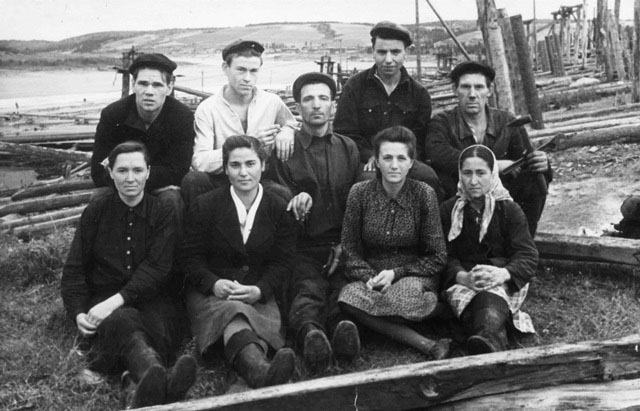
Deported Crimean Tatars working in a logging camp in Siberia in 1952. Ukrainian Institute of National Remembrance/Wikimedia
After Stalin’s death in 1953, the Crimean Tatars were banned from returning to their homelands, unlike most of the other Soviet “punished peoples,” such as the Chechens and other Tatar populations, who were fully rehabilitated. The Crimean Tatars embarked on a thirty-five-year campaign for the right to return, the most concerted movement of dissent in the history of the Soviet Union.
The Tatars defied the regime’s efforts to make them assimilate with other Turkic and Muslim peoples in Central Asia. Although it was a thoroughly nonviolent movement, jail sentences were handed out to hundreds of activists. Its foremost leader was Shevkiye’s baby brother, Mustafa Dzhemilev, six months old at the time of the deportation. Dzhemilev was a veritable Nelson Mandela of the movement, imprisoned six times and undertaking a 303-day hunger strike.
This struggle forged an even stronger national identity centred on the trauma of the Sürgünlik (exile) and a yearning for the lost homeland. Other displaced peoples have trod a similar path, including the Jews after the Shoah and the Palestinians following the Nakba (Catastrophe).
The Tatars finally won the right to return in 1989, just as the democratic reforms unleashed by Soviet president Mikhail Gorbachev were taking off. Crimea had long before become part of Ukraine, transferred from the Russian republic to Kyiv by Stalin’s heirs under Nikita Khrushchev in 1954.
When Ukraine became independent in 1991 many Crimean Tatars fulfilled their dream of returning to the peninsula. The 2001 Ukrainian census (the most recent) recorded some 240,000 Tatars, or 12 per cent of its population. Many faced numerous obstacles, however, and ended up in poverty, living in shantytowns and unable to reclaim their families’ former houses.
Yet the Crimean Tatars made progress. In 2001 the Ukrainian parliament enacted a consultative role for their representative body, the Mejlis, giving it a status similar to that proposed for Australia’s Voice to Parliament. They became ardent supporters of the newly independent Ukrainian state.
Fifty-six per cent of Crimean residents had supported leaving the Soviet Union in the 1991 independence referendum. Opinion polls over several years leading up to the 2014 annexation showed well under half in favour of leaving Ukraine and joining Russia.
Russia’s sham referendum just eighteen days before the 2014 annexation claimed that a wildly implausible 96 per cent of voters wanted to join Russia. But even if there were now a majority preferring Moscow over Kyiv, the real history of Crimea undermines any Russian claims to the peninsula based on population. The Russian majority was created on the blood, bones and tears of the Crimean Tatars.
For the Tatars, Russia’s occupation has brought back the bad old days. The United Nations and other organisations have documented arbitrary detentions, torture, expulsions and harassment of Crimean Tatar (and ethnic Ukrainian) activists and protesters. Many have fled Crimea, and Tatar leaders claim that hundreds of thousands of Russians have moved in, contrary to international law on occupied territories.
Muslim communities have been attacked and religious literature burned. Members of the remaining Crimean Tatar population have been pressured to renounce their Ukrainian citizenship. Tatar-language media outlets have been denied re-registration. Tatars have also been subject to forced mobilisation into the Russian army, a violation of the Fourth Geneva Convention. Russian authorities outlawed the Tatar Mejlis as an “extremist” organisation in 2016. The International Court of Justice upheld a challenge to this ban in 2017, but Russia has ignored the verdict.
Ukraine’s much-anticipated counteroffensive during the northern summer will be crucial to its chances of pushing Russian forces out of all or most of its territory. Even if Ukraine succeeds in the east and south, though, Crimea could be a much harder nut to crack. Some fear that Putin’s prestige is so tied up with his seizure of Crimea that he might resort to nuclear weapons rather than lose it.
With such concerns in mind, some pundits argue that Ukraine should or will be forced to make a deal in which Crimea is handed to Russia. But the permanent cession of Crimea would simply be a reward for aggression, an outcome that 141 countries in the UN have already rejected, affirming that “no territorial acquisition resulting from the use of force can be recognised as legal.”
Were Crimea to stay under Russian occupation, either permanently or in a Cyprus-like frozen conflict, it would be a dagger pointed at Ukraine. Its protected position makes it an ideal launchpad for renewed invasions and threatens Ukraine’s access to the Black Sea.
Practical geography also explains why Crimea’s future outside Ukraine would be difficult, as Khrushchev recognised in 1954. The largely arid peninsula relies on water pumped by North Crimea Canal, 100 kilometres from the Kakhovka dam on the Dnipro River, which supplied 85 per cent of its fresh water before 2014.
The canal’s flow was cut after the annexation, causing severe shortages, but then restored after the 2022 invasion of southern Ukraine launched from Crimea; along with creating a “land bridge” to Russia, the canal was undoubtedly an objective of the invasion. That link was highlighted again by the recent destruction of the Kakhovka dam, which controls the flow to the canal.
An equally strong argument against Russian control is the fate of the Crimean Tatars. After overcoming dispossession, deportation and genocide to slowly re-establish themselves in their homeland, they fear being left once again under the thumb of a Moscow regime they view as a longstanding oppressor.
Are they to be cast aside again in the interests of realpolitik? Should not indigenous people have a casting vote on the fate of their homeland? In the words of Shevkiye’s granddaughter, Elmaz Asan, “Crimea is no bargaining chip in a geopolitical game; it is my homeland and I will not give it up, just like my ancestors did not.” •
